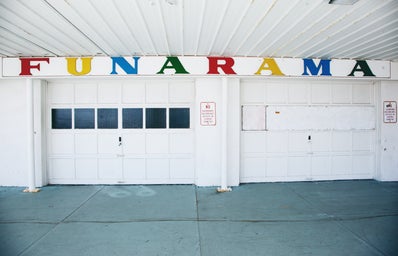On May 5, after just three and a half years in business, Wynwood Yard closed its doors for the final time. In its place will rise an eleven-story apartment building from developer giant Lennar.
Once known as the “springboard community” with high unemployment rates, Wynwood underwent intense gentrification in the early 2000s that revitalized the area. Today, Wynwood is known as a hip catalyst for artistic creativity and culinary expression just outside of downtown Miami. Now, the Wynwood area is experiencing a second wave of gentrification marked by high rises and skyscrapers.
Courtesy: Miami Grid
Though I like to call myself a native to this area by which I grew up, the truth was that I did not know much about it. As a young kid and even a teenager, I walked the streets of Wynwood admiring the artwork on the walls and sidewalks, but I was blind to the history that laid behind them. I never questioned how these graffitied walls got there or why there was such a prominent line of demarcation marking where the “slums” ended and the “hip part of town” started. All I ever knew was “don’t cross the line.”
Too often, we are quick to pass judgment on places—and thus the people who reside within them—that are deemed unsafe and less affluent. Behind these seemingly rundown and high crime neighborhoods, however, lay a group of people with a rich culture still suffering the impacts of our country’s racist past.
Residents of Miami’s highest ground, that stretches from north Miami-Dade County to the upper Florida Keys, are predominantly people of color forced decades ago into less attractive areas by racist “redlining” mortgage lending practices.
Redlining was the process by which banks in the early 1930s through ‘70s denied loans to housing areas that were deemed “hazardous” because people of color inhabited those areas. White neighborhoods often tried to protect their property by enforcing restrictive clauses on their home sales, which prevented black families from purchasing property. As a result, the rise of African Americans renting homes rather than purchasing them increased at exorbitant rates, and neighborhoods became immensely segregated.
Courtesy: Zocalo Public Square
While today invisible lines are marking the racial divide between these cities, for decades there were physical walls. Historian Timothy Barber, reports to NBC News, “[White people] did not want to look out their doors and see black people in their neighborhood. So, for some reason, as they built Liberty Square a wall went up as well.”
The impact of redlining goes far beyond the individuals who were denied proper financial assistance when purchasing their homes in the mid-‘60s. Over the years, the neighborhoods that minorities were forced to live in have now become vulnerable and susceptible to high crime rates.Though it is easy to look down the street and cast aspersions on people and label them as criminals, it is imperative to acknowledge that they are equally victims. As such, gentrification only serves to mimic this system of institutionalized racism.
Courtesy: Miami Herald
The Miami Herald reports that Paulette Richards, a resident of Liberty City said, “I didn’t buy a house for investment. I bought this to live in, to die in. It’s my legacy, my home, my worth. Without that what else do I have?”
While businesses can simply relocate, homeowners do not have the convenient privilege of being as mobile. For residents of areas such as Little Haiti, Little San Juan and Liberty City, selling their homes does not mean moving, but rather further displacement.
Want to see more HCFSU? Be sure to like us on Facebook and follow us on Instagram, Twitter and Pinterest!



